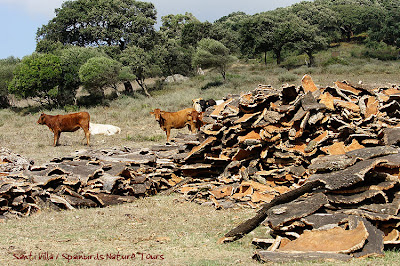De nuevo viento fuerte del este. Hoy hemos pasado la mayor parte del día en el Parque Natural de los Alcornocales. Mucho movimiento de culebreras y calzadas con algún que otro abejero. Poco destacable el paso de paseriformes y entre los residentes reyezuelo listado y herrerillo capuchino. También interesante los invertebrados con observación de Bajá de cuatro colas, Calopteryx haemorrhoidalis y Orthetrum coerulescens. Por la tarde visita a la desembocadura del río Palmones donde hemos visto gaviota cabecinegra, zarapitos trinador y real, espátula, un solitario flamenco adulto, dos águilas pescadoras, martín pescador y ostrero.

Calopteryx haemorrhoidalis macho (Copper Damselfly male), Alcornocales

Calopteryx haemorrhoidalis macho (Copper Damselfly male), Alcornocales

Alimoche común (Egyptian vulture), Alcornocales

Two main sites today, Los Alcornocales Natural Park and the Palmones Bay. Amongst the most interesting species were Little Ringed Plover, Honey Buzzard, Short-toed and Booted Eagles, Osprey, Eurasian Curlew, Whimbrel, Greater Flamingo, Eurasian Spoonbill, Mediterranean Gull, Oystercatcher. Two new dragonflies for the trip Copper Damselfly and Keeled Skimmer and the always beautiful Two-tailed Pasha.




No hay comentarios:
Publicar un comentario